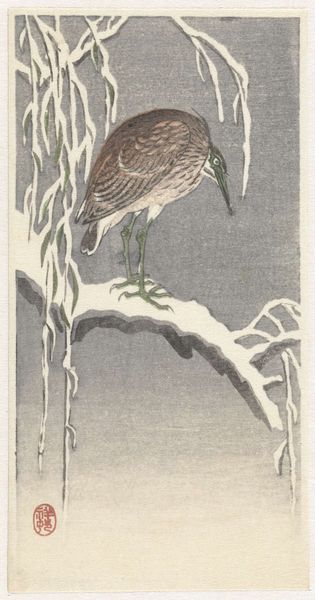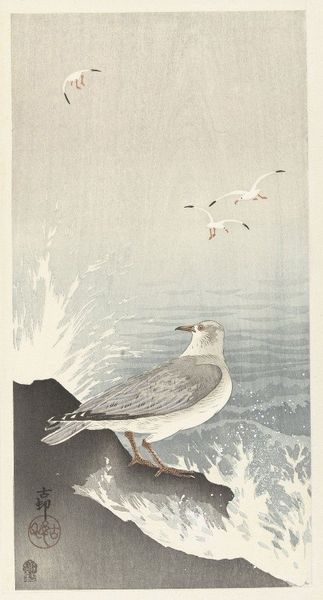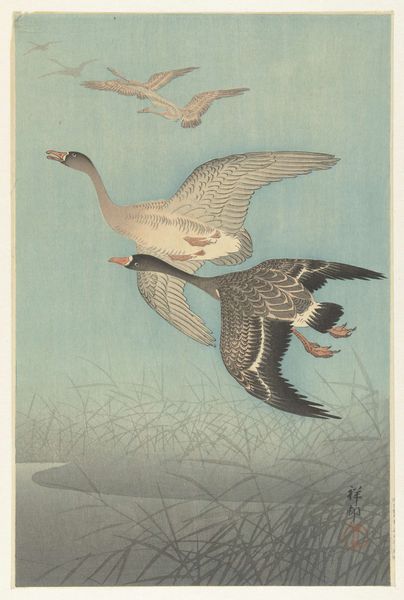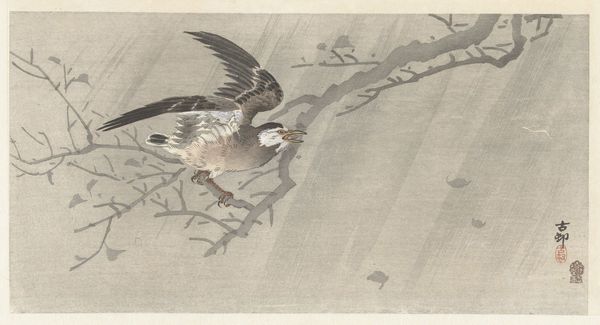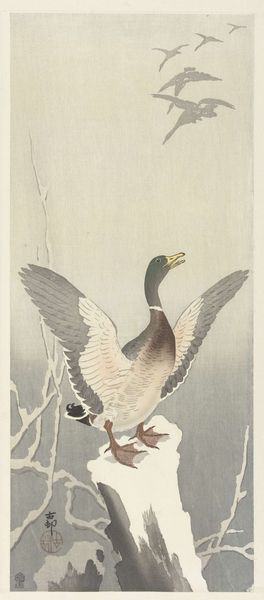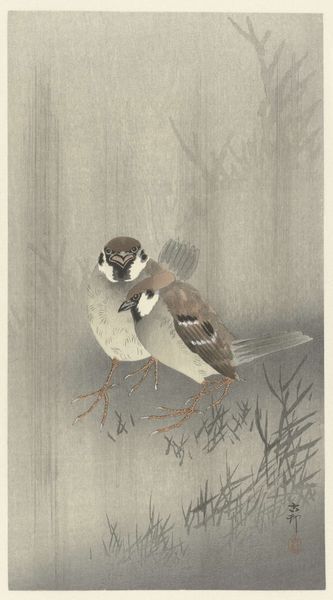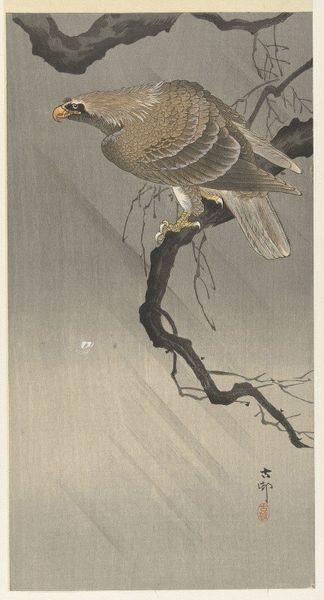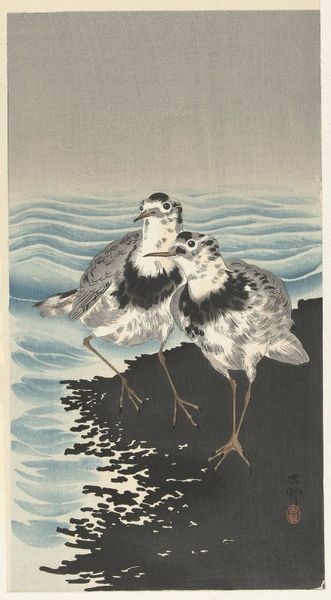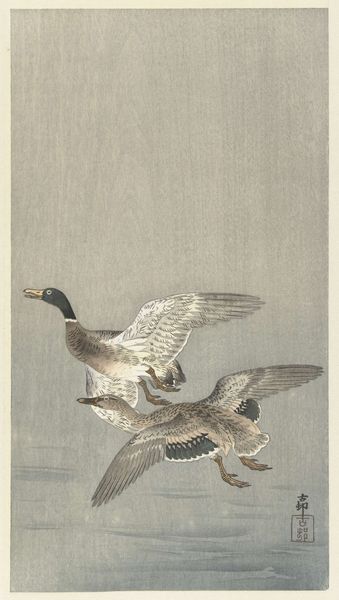
Dimensions: height 346 mm, width 186 mm
Copyright: Rijks Museum: Open Domain
Curator: Soothing, isn't it? A muted moon, gauzy gray palette... it feels like a memory. Editor: And immediately striking, this careful gradation of the gray woodblock print...look at how effectively the limited palette simulates a quiet atmosphere and stillness in the reedbed. Curator: We’re looking at “Zwarte ruiter op bamboetak,” or "Black Rider on Bamboo Branch", a print by Ohara Koson, dating somewhere between 1900 and 1936. Part of the Rijksmuseum collection. Editor: Woodblock printing offers incredible scope for artistic craft, a perfect medium for depicting nature scenes where subtlety and texture are key. How do you read it? Curator: A meditation on solitude, perhaps? That bird, perched so delicately... the overwhelming gray tones surrounding him remind me a bit of existential questioning, a yearning for meaning in this washed-out world. It is a reflection, somehow, about loneliness and seeking something out of reach... perhaps even the moon. Editor: I find myself drawn to the materiality, how the artist made decisions about grain, layering and registration. This gives a slightly misty quality but one which, unusually for the medium, presents depth; rather than focusing on the clean and definite edges, the artist blurs some of the detail. I find the bird's presence very precise by comparison, and it focuses the gaze and balances the soft, almost smudged quality in the background. The effect is like an echo. It all draws you into the artistic process, celebrating the inherent qualities of this craft. Curator: Absolutely. Koson's play with the wash effect invites reflection, a kind of letting-go. A reminder that even in darkness, or even the most minimalistic art production, there’s still incredible, subtle detail if we just observe... The very monochrome tones allow it to achieve a rare moment of harmony. Editor: It also challenges notions around mass production through printing, suggesting instead that considered hand-worked artistry remains integral even where technologies enable more mechanical processes. It makes one look beyond the surface. Curator: A lovely invitation for us, too, I think, to reflect and dive beneath the surface, seeking solace in both artistry and, frankly, whatever lonely bamboo branch we each might be clinging to. Editor: I agree - even from a relatively small object, quite grand gestures towards craft and artistic merit can still be powerfully received.
Comments
No comments
Be the first to comment and join the conversation on the ultimate creative platform.

